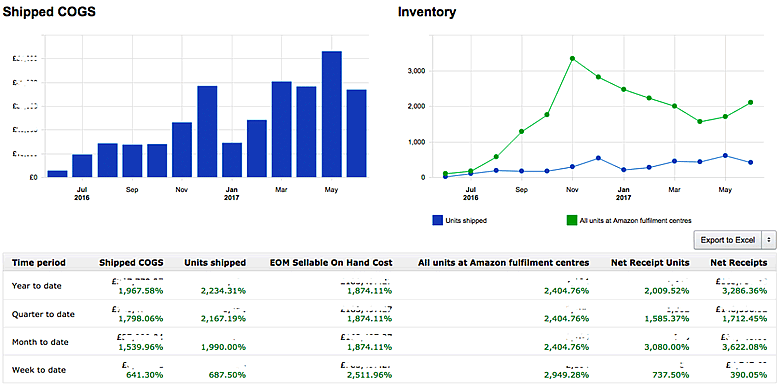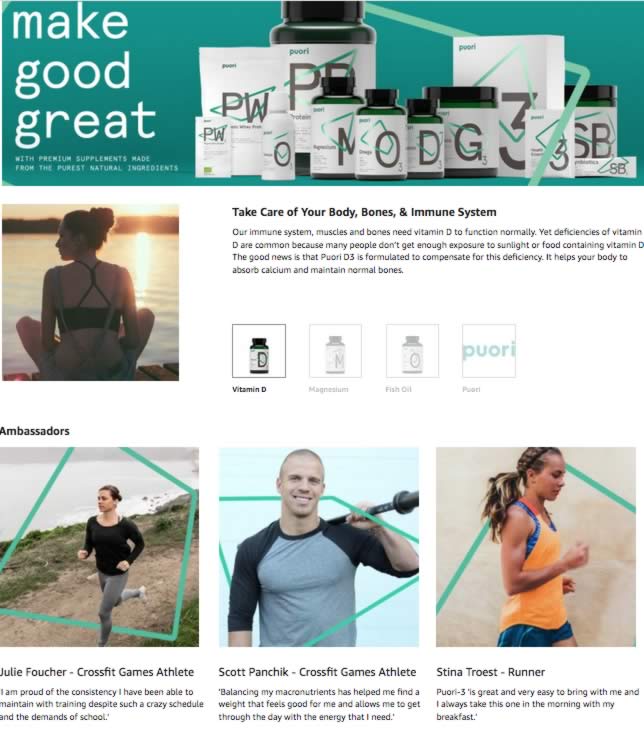This post is by Jérôme de Guigné of e-Comas.
Wouldn’t it be great to have a secret recipe to ensure success on Amazon?
Businesses often look at the products they already sell, or can buy from their suppliers, and try to figure out how to make them profitable on Amazon. Like trying to fit a square peg into a round hole, it will never work if you picked up the wrong item to begin with.
But what if we could reverse engineer the problem? If we can discover the traits shared by products that have been successful in the past, can we create a new product with all the right properties to be a future bestseller?
I believe we can!
There is an optimum size, price and context that has a much greater chance of success on Amazon than the average product from your catalog. I’ve helped many businesses succeed on Amazon over the last five years, and time and time again the products with the right attributes succeed, while others struggle to gain traction.
So what are those attributes that the best products have?
1. Size
Whether you trade as a third-party seller on Amazon marketplace, or sell wholesale to Amazon as a vendor (or some combination of seller and vendor), there are always logistics costs to be factored in. The bulkier and heavier a product is, the higher the logistics costs will be.
On the marketplace, whether you use FBA or fulfill orders yourself, the logistics costs come back to you and are easy to see. If you sell to Amazon as a vendor, the costs are still there, but they are Amazon’s and will be factored into the price they are willing to pay for your goods.
Smaller products have less pressure on the price to end-users. Memory cards are a great example in terms of size: they can be shipped by envelope quickly at very cost-efficient rates. Cheap bulky items, on the other hand, often have to increase their price to factor in all costs, and can become unattractive to shoppers.

2. Price
Low priced items become unprofitable quickly – below $15, products are easily overwhelmed by delivery and warehousing costs. On the contrary, mid-priced products between $50 and $120 with a compact size are a great opportunity.
Products over $150 or so get into a more expensive category. The potential volumes are lower, but they can yield a better profit and should still be considered.
The higher the price, the easier it will be to factor in costs. But make sure your products are not overpriced, and keep them under psychological trigger points, to generate larger quantities and a better ranking. The best products are profitable yet at a competitive price point.
Having a healthy profit margin provides the opportunity to generate traffic and boost sales (and ranking) through Amazon Marketing Services (sponsored products ads, headline search ads, product display ads) and through promotions (Lightning Deals, best deals, vouchers).
Price and size are linked via the value-to-size ratio. Expensive, small items have the highest value-to-size ratio, while cheap, large items have the lowest. Mastering this will be a major factor in finding the best products. If the value-to-size ratio is too low then costs will kill your offer, making the product too expensive to advertise and your price uncompetitive.
3. Distribution
Amazon wants to offer the best shopping experience to its customers, by providing the best prices in the market. It has one of the most powerful pricing mechanisms in the world.
Amazon is not a price setter, but it is a very strong, smart and quick price follower. Many times per day, it scans its own marketplace for other sellers offering the same product, and also other ecommerce sites (e.g. Walmart and Target in the US) and adapts its price to the cheapest offer.
If you sell to Amazon as a vendor, or Amazon decides to sell the same products as you on the marketplace, this price pressure will come straight back to you. Vendors will be asked for extra rebates, and sellers will lose the Buy Box.
But if you sell products with limited distribution – so they aren’t available from a large number of online retailers and the price is controlled, your margins are protected. If you can bring a product to Amazon that isn’t available anywhere else online, there will be much less pressure to reduce your prices. If you sell products with uncontrolled distribution, this will show immediately in the pricing on Amazon.
Case Study: Let’s look at the example of a German brand of mid-to-high end binoculars, with compact products ranging from $80 to $599, and a best selling item priced at $120. They’re a strong brand in Germany but have very limited distribution in other countries.

When they started selling on Amazon in North America and Europe, they were able to grow their sales by 500% in two years because they had a small product, with a good price point. The distribution was also limited which meant there was little price pressure, and they could maintain their profit margins.

4. Brand
Amazon wants to list all the products in the world, and they are very interested in brands. This is especially true for vendor accounts, but also for marketplace sellers.
Having a branded product helps single it out, and make use of Amazon’s marketing tools (A+ content for vendors and sellers who are brand owners, or store pages) to tell a story to your customer. A nutrition brand with strong values on providing better health to the world, for example, will have the opportunity to share its powerful message on Amazon, and engage customers.
This means, in some cases, that little-known brands are a better prospect on Amazon than really well-known branded products. Big brands are already being sold, so there’s a lot of competition and price pressure, and little value that you can add. Generic products have very little scope to build recognition and tell a story. But smaller, good quality brands which are not yet established can tick all the right boxes.
Amazon is providing big opportunities for small players!
5. Marketability
The most successful products on Amazon are the ones you understand straight away, with easy-to-explain features, that make it simple to show the value they add.
On Amazon, as on any other ecommerce site, you can only sell with pictures, text, and video. For example, an item of fitness equipment with three simple customer benefits can be presented through photographs, through a video of a fitness coach explaining why to buy the product, and through pictures in A+ or EBC content explaining why it is good for athletes. The result will be a great conversion rate!

When choosing a product, make sure you can visually show the benefits, and prepare for it with photos, videos and text. You need to focus your efforts on generating value added content. Some products, including some which are incredibly innovative and beneficial, do not lend themselves to visual illustrations. It will be a real battle to sell those on Amazon.
A product with simple and straightforward benefits is best: a smartphone case with a new holding system which you can immediately catch the benefit of from one picture, will result in quick purchases and strong growth.
Case Study: Let’s look at an unknown brand of Apple MacBook accessories, who sell small products that look great and benefit from the Apple aura. Because the products are small, the logistics costs are low and the brand is able to invest in heavy promotion to help them gain attention in a crowded market.

The perceived value of these products is high, because they look technical, and this means that they can be sold for above $50. Keeping the price high is the key to standing out, and having limited distribution helps to achieve this, as it means there is little price pressure.
When they started offering their products on Amazon, the growth was immediate. In fact, they were awarded an “Amazon’s Choice” badge just two weeks after launching on the site.
6. Availability
This may seem obvious, but it has been the downfall of many products that otherwise had every attribute for success. If the product is not available then it won’t sell. Only go ahead with a product if you can secure and maintain consistent volumes of stock.
Not being able to provide inventory (whether vendor or seller) will make everything else you have done useless. As soon as stock runs out on Amazon, your ranking will drop, your product will become hard to find, and it certainly won’t get any sales. By the time you replenish inventory your competitors could have moved in and a good product will never get to reach its potential.
It’s better to hold off from selling a product until you are confident of a good supply, than move in early and risk damaging the market.
Key learnings
So what does the best product to sell on Amazon look like?
Well, there are many products that could do well, of course, but those which do best tend to have the following attributes:
- Small size (or ratio of value-to-size)
- Mid-range price
- Limited distribution
- A lesser-known brand
- Features that are easy to market
- Consistent availability of stock
Small, branded, moderately expensive items with recognizable customer benefits and selective distribution are the best products, and stand the most chance of success.
This post was by Jérôme de Guigné, founder of e-Comas.
Jérôme‘s team advises and manages industrial and consumer brands on Amazon, in Europe and North America, to help them grow their sales. They handle Vendor, Seller and AMS accounts, offering support in English, German, French, Spanish and Italian.

May I simply say what a relief to discover somebody that truly understands what they're talking about on the web. You definitely know how to bring an issue to light and make it important. A lot more people have to read this and understand this side of the story. It's surprising you're not more popular given that you surely have the gift.|